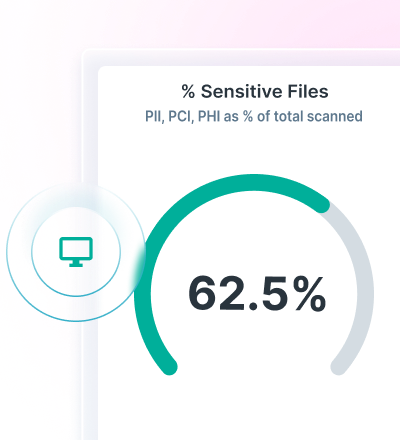The High Cost Of Poor Data Governance
0 min read
Data has become one of the most valuable corporate assets, and one of the riskiest to mishandle. Organisations now compete not only on the products and services they deliver, but also on the integrity, accessibility and reliability of the data that underpins every decision. When that data is poorly managed, the costs extend far beyond IT budgets.
This article examines the impact of poor data governance, unpacks its financial, operational and human toll and demonstrates how robust governance is no longer an administrative exercise but a strategic necessity.
What is data governance?
Fundamentally, data governance is the discipline of managing data quality, security and usability across the enterprise. Beyond merely storage, it’s about who owns data, how it is protected and how it can be accessed and used responsibly.
A mature data governance framework establishes accountability and standards, setting the rules for how information flows through the organisation. It defines roles, enforces data stewardship and provides clarity in a business world where compliance demands are tightening, and data volumes are exploding.
Data governance vs. data management
It is common to see the terms data governance and data management used interchangeably, but they are not the same. Governance defines the rules of the road: the policies, ownership and accountability structures that determine how data is handled. It answers the question of who should do what, and under which conditions.
Data management, on the other hand, is the execution layer. It covers the processes, technologies and day-to-day operations that move, store and secure data across the enterprise. In essence, governance sets the direction, while management drives the vehicle.
Both disciplines are essential. Without governance, management lacks oversight and consistency. Without management, data governance remains theoretical and unenforced.
Direct costs: the financial impact of poor governance
The financial burden of a weak data governance framework is both real and rising across the region. According to IBM’s 2024 Cost of a Data Breach report, businesses in ASEAN face an average breach cost of about US $3.23 million, up 6% from the year prior. In some sectors, such as financial services, losses soar to an estimated US $5.57 million per incident.
This includes fallout from regulatory violations and erosion of customer confidence. High-profile data breaches, such as the SingHealth incident, resulted in substantial financial penalties. The Personal Data Protection Commission (PDPC) imposed a combined fine of S$1 million on SingHealth and Integrated Health Information Systems (IHIS) after approximately 1.5 million patients had their personal data stolen.
Poor data quality further magnifies these risks. Incomplete, inconsistent or inaccurate data leads to flawed analytics, misguided investments and missed opportunities.
In other words, when decisions are made on untrustworthy information, the price is paid in lost revenue and diminished competitiveness.
Operational drag and lost opportunity
The operational burden of lacklustre data governance is less visible but just as damaging. Teams spend countless hours searching for accurate datasets, cleaning errors and reconciling conflicting versions of the truth. Critical projects, such as AI pilots or enterprise analytics rollouts, often stall because data cannot be trusted.
Decision-making suffers as silos proliferate and departments rely on inconsistent metrics. The result is “decision drift,” where leaders cannot align around a single version of reality. In the era of rapid digital transformation, this drift carries real opportunity costs in the form of delayed product launches, missed customer insights and compromised agility.
Data sprawl adds to the risk. With generative AI tools producing vast volumes of new information daily, organisations without strong governance processes and procedures face growing blind spots in security and compliance. What could have been a competitive advantage becomes a liability.
Human and cultural toll
The lack of adequate data governance also affects people. Employees waste valuable time working around unreliable data, creating manual fixes or duplicating efforts. The frustration erodes morale and fuels burnout, particularly among data scientists and analysts who expect clean, usable datasets as a baseline.
Confusion on ownership makes matters worse. Without clearly defined governance processes and procedures, responsibility for data management falls between departments. This “nobody’s job” problem creates confusion and internal friction. Over time, it weakens trust in the organisation’s ability to execute with precision, which can undermine culture — and eventually, performance.
Bridging data governance from control to transformation
Many organisations view data governance as a compliance obligation, a set of checkboxes to avoid fines or audits. It goes without saying that such a perspective is limiting. Governance, when approached strategically, becomes a lever for competitive advantage. A robust data governance framework enables confident decision-making, stronger customer relationships and faster time to market.
Forward-looking enterprises are reframing governance as an enabler. It is the foundation that allows leaders to extract value from analytics, AI and automation while knowing their data is secure, accurate and compliant. In other words, the conversation must shift from avoiding penalties to accelerating growth.
Building frameworks that create value
An effective governance model must be rooted in clarity and accountability.
- Leadership needs to define roles, responsibilities and escalation paths, while data stewards enforce standards day-to-day. This alignment evolves governance processes and procedures from theories to operational expectations.
- Technology also plays a critical role. Modern tools can automate discovery, classification, lineage tracking and access controls, so organisations gain visibility across sprawling data environments. With these capabilities, enterprises can embed data management risks and controls into workflows instead of relying on reactive audits.
- The most mature organisations establish adaptive data governance: frameworks that evolve as new regulations, business models and technologies emerge. Rather than locking governance into rigid structures, they build resilience and agility, so the business can pivot without losing compliance or data integrity.
Conclusion: governance as strategy, not obligation
The impact of poor data governance is not confined to fines or wasted hours. It corrodes decision-making, slows transformation and erodes trust at every business level. Conversely, governance approached as a strategic discipline transforms data into an asset that drives growth and resilience. Senior leaders should not ask, what is data governance? — but rather, what can governance unlock for our business?
Forcepoint’s DSPM (Data Security Posture Management) helps organisations strengthen governance where it matters most: in everyday communication. By automatically detecting and classifying sensitive data with AI-powered precision, it proactively prioritises and remediates data risk.. To learn how Forcepoint can help embed governance into your daily operations, explore our data loss prevention solutions today.
In the Article
X-Labs
Get insight, analysis & news straight to your inbox

To the Point
Cybersecurity
A Podcast covering latest trends and topics in the world of cybersecurity
Listen Now









